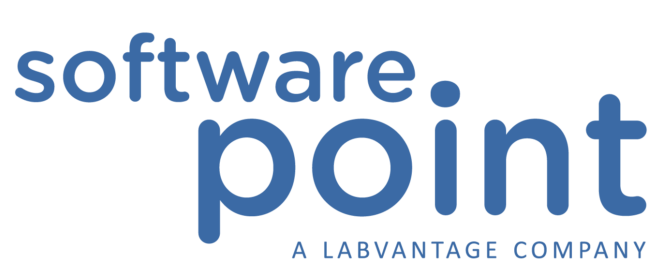13. Sep 2019 | Tags: IoT, LabVantage, LIMS
What Can IoT Do in the Lab?
In the lab, IoT devices can provide instant or long-term analysis unlike anything we’ve ever experienced. It will likely transform how we conduct research, process development and manufacturing.
The data from IoT devices can notify you about events in real-time, as well as yield insights into what is occurring. Data notification can be continued over time in order to gather a wider range of analytics. The data can also be reused to solve problems beyond the original intent.
What are some of the Drawbacks of IoT?
For now, though, there are some challenges to solve. Legacy systems create a digital impasse, as they are not IoT compatible. Furthermore, only a limited number of people have the expertise to create secure IoT networks, as well as the analytics knowledge to leverage the data these networks will create. And the final drawback is the high cost of the initial investment. Moving data securely is expensive. It must be responsibly transmitted and collected before receiving any return on investment.
What is the State of IoT in the Lab?
There are no sentient centrifuges here. Every instrument in your lab is a “thing,” and each is a sensor or tool meant for measuring or affecting change.
Many of these devices are not IoT devices, and they only send data when prompted. Furthermore, the majority of these devices are not Internet-ready. The data collection uses antiquated protocols or proprietary communication specifications that make every data point an effort in universalization.
In addition, many labs lack some of the key elements that make IoT easier – such as high-speed Wi-Fi, and ‘Five-Nines’ availability of services (service available 99.999% of the time, with both planned and unplanned downtime limited to just over 5 minutes per year.)
All lab devices and their data must remain in closed networks since labs are subject to the highest security measures – especially in the healthcare industry. This security issue renders the typical Amazon or Google solution nearly impossible to use, in spite of the security steps they may take.
The data from lab instruments is extremely important to LabVantage and our customers, and we’re seeking ways to use IoT concepts to improve our products.
What is the State of IoT at LabVantage?
Our Existing Products
LabVantage already operates within our customer’s closed networks. Our secondary products communicate with and collect data from instruments within the lab, taking into account the highly proprietary nature of the instruments’ specification protocols. With LabVantage, you can transform any instrument into an IoT device by using:
LabVantage SoftwarePoint Connect
LabInsights Proof of Concept
We have developed a proof of concept in collecting status insights. Connect was used to query various instruments and obtain data on activity, alarms, and low consumables. We’ve also worked to make these systems more “edge” resilient. For instance, if the network or collection engine went down, actions are taken to save and retransmit the data. Lastly, data collected from the instruments via the secondary products alerts a Lab Manager when additional resources, scientists, servicing, or devices are required.
8.5 SDMS
The 8.5 release of LabVantage LIMS includes a Scientific Data Management System (SDMS). The first benefit of the SDMS is that it meets our customers’ need to collect and archive results data directly in LabVantage. However, this data can and will be collected in a myriad of ways, including via IoT.
By collecting this data in a centralized repository, the utility of IoT in your lab becomes clear:
Descriptive insights can be given on what instruments are returning results, along with the content of those results
Issues with results can be more easily identified, diagnosed, and resolved or retested quickly.
Eventually, LabVantage can create applications to predict results or issues. Lab or data scientists can act proactively to reduce waste.
AI machine learning principles and applications can be applied to perform the analytics and produce outcomes without requiring human interaction
Other possibilities have yet to be imagined. As the technology matures and customer suggestions from the field begin to arrive, LabVantage will develop new and exciting ways to leverage IoT.
Data Standardization
LabVantage has identified Data Standardization as another way to benefit from the data collected by SDMS. As mentioned previously, most instruments today use proprietary communication and data specifications.
Instrument vendors have created these proprietary, closed systems to embed their products in labs, since replacing their hardware also requires significant investment, integration, as well as process changes.
There can be a costly downside when you want to replace your hardware to use best-of-breed tools. Your previous hardware acquisitions can leave you limited to your current ecosystem.
There have been a few attempts to resolve this problem by standardizing the data – including Allotrope, AnIML, and ACAML – but each approach suffers from its own pros and cons. Furthermore, instrument vendors do not support this, largely because it isn’t in their best interest.
However, with LabVantage’s SDMS, all result data is saved and ready for potential analytics. It can be easily transformed into any or all of the abovementioned data standardizations. (LabVantage provides customers with this added benefit to improve their ability to have lab instruments interact with each other, or even interchange them when needed.)
While LIMS IoT is still in the early stages of development, LabVantage has taken the time to build a strong foundation – and the future possibilities with IoT are endless. Over time, we will continue to pinpoint solutions that most benefit our customers and our platform to maximize the value for everyone.
Find out more about how using the IoT through LabVantage can help your lab.

